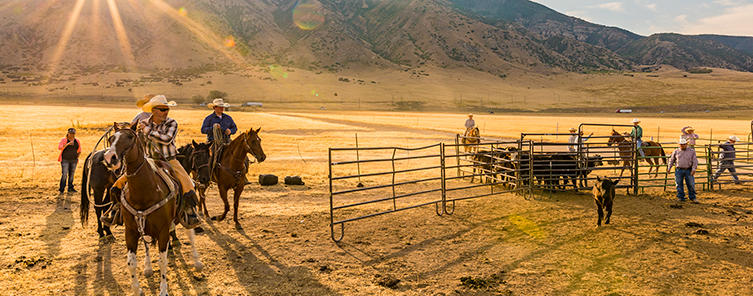Use slow periods to improve Feedlot Inventory Management
A feedyard has many moving parts. Among the lowest-hanging fruit in operational revenue loss is inventory control. Feedlot Inventory Management includes many facets, but managing each one is critical. From cattle inventory to ingredient and animal health products, each facet plays a major role in operations and the overall well-being of the cattle.
Most of the Feedlot Inventory Management practices I mention here aren’t new. But they serve as a reminder that some systems may need to be revisited or improved.
It’s not news that beef herd expansion has been underway. Feeder cattle supplies of all shapes, sizes and ages are becoming steadier. Likewise, a sizable part of feedlot country is coming off a less-than-stellar wheat cattle run due to the dry weather. If that dry weather persists, it will likely mean that the fall grass run of yearlings will be here sooner, likely into the summer months, colliding head-on with silage harvest. That translates into long days, early deliveries, light in-weights, potential health problems, busy employees and more.
Typically, those busy weeks and months can turn into survival mode. That’s when steps are sometimes skipped, and short cuts taken — all leading to an inventory wreck at the end of the period. Therefore, capitalize on the slow times (all relative in a feedyard, of course) to create, change or update processes at the yard. Inventory losses can be curtailed when efficient processes are put into place and managed on a consistent basis.
Revisit procedures for cattle counts, proper pen space
Receiving –
It’s important all the time, but more so in busy times, that we have sound procedures for ensuring correct head counts upon arrival. A missed count can last throughout the feeding period, creating problems every step of the way, from accounting to performance. Counting cattle to and from receiving scales, to receiving pens, to processing all may be intensive, but you’ll know you’re right and paying for the right head count. Relying on the truck driver’s count or the night man is a poor practice.
Stocking rates –
Cattle on feed numbers are surpassing last year’s by over 5 percent. This can translate into an insufficient number of pens on the yard to unload feeders. When we get overrun with feeders, we might want to put cattle into a pen lacking the adequate bunk space. We have every intention to move them—until the next loads show up. Providing proper bunk space early pays dividends throughout the feeding period from a health and performance perspective. The optimal stocking density for yearling cattle in the summer is 125 square feet, regardless of drainage and slope. Calves and high-risk cattle will need more. When space is scarce, double-check the capacities of longer-day cattle. There is a chance that some pens may still be understocked from winter capacities. Pen moves or consolidation free up space.
Scrutinize controls for your animal-health products
Even when times are slow, animal-health product inventory can be problematic. Starting in processing, some critical controls are easy—if they are being managed. A good practice is to have a supervisor check out the amount of meds needed for the day’s processing. That will result in less vaccine and antibiotic spoilage, or products simply disappearing, among others. That way, when meds are checked back in at the end of the day, reconciliation can find discrepancies. Some of the large animal-health product suppliers have technologies that allow employees to check medicine in and out with only a fingerprint scan.
Certain times of year can see increased deliveries of feeders, high-risk cattle and a high percentage of sick pulls. Mitigating inventory loss in these times is accomplished by having processes where processing and animal-health teams routinely check the dosage levels on syringes and automatic syringe guns. All progress is lost if not reconciled often, even daily. Picture a full day’s worth of processing high-risk cattle that calls for metaphylaxis. Being off a mere percentage of a cc on your high-dollar antibiotic, or any other regimen, not only increases your cost but also compounds the problem every time another animal is worked.
Double-check feed-mill processes
The heartbeat of the feedlot is the mill. There are multiple ways, from loader to feed bunk, where inventory can go crooked. Inventory control in this feedyard sector feedyard directly impacts the health and performance of the cattle, not to mention regulatory control. This is where incremental deviation of ingredients can come with many costs. That said, nothing else matters if the mill isn’t running.
Having a reliable process for managing inventory for all crucial parts (bearings, motors, gear boxes, etc.) may sound like a no-brainer but can be overlooked when times pick up. Along with recording accurate dry matters, daily reconciliation of batch records done correctly is a practice that can bring attention to many issues. It should be used not only because FDA requires it but also to prevent pricey inventory loss on micro ingredients.
To ensure that what’s being called for is actually what’s being fed, a good management practice is to have all individual ingredient scales, feed truck scales and mixer scales calibrated at least every quarter, as needed or required by the state. Timely inspection and reconciliation mitigate those hard-to-look-at numbers.





